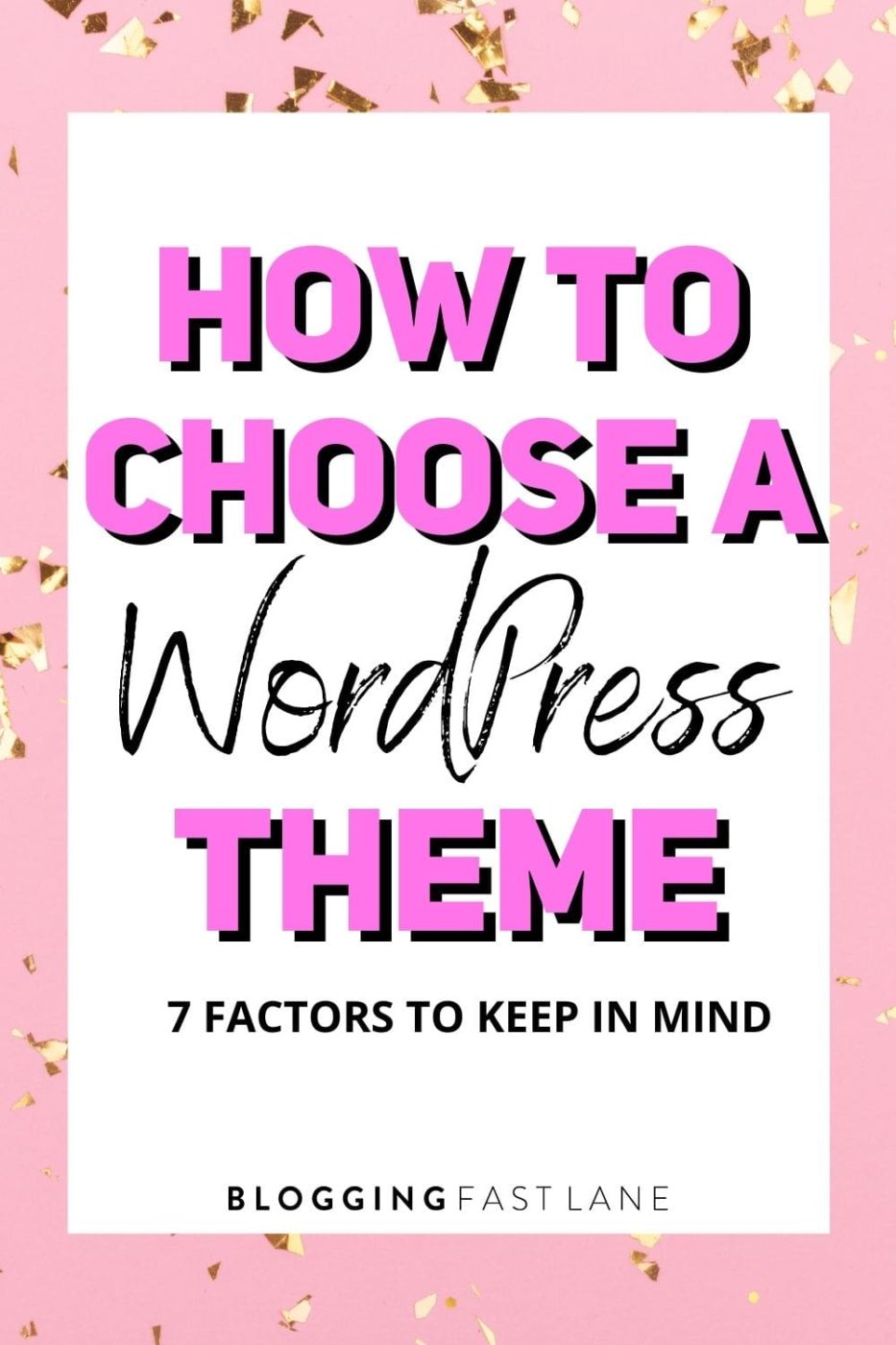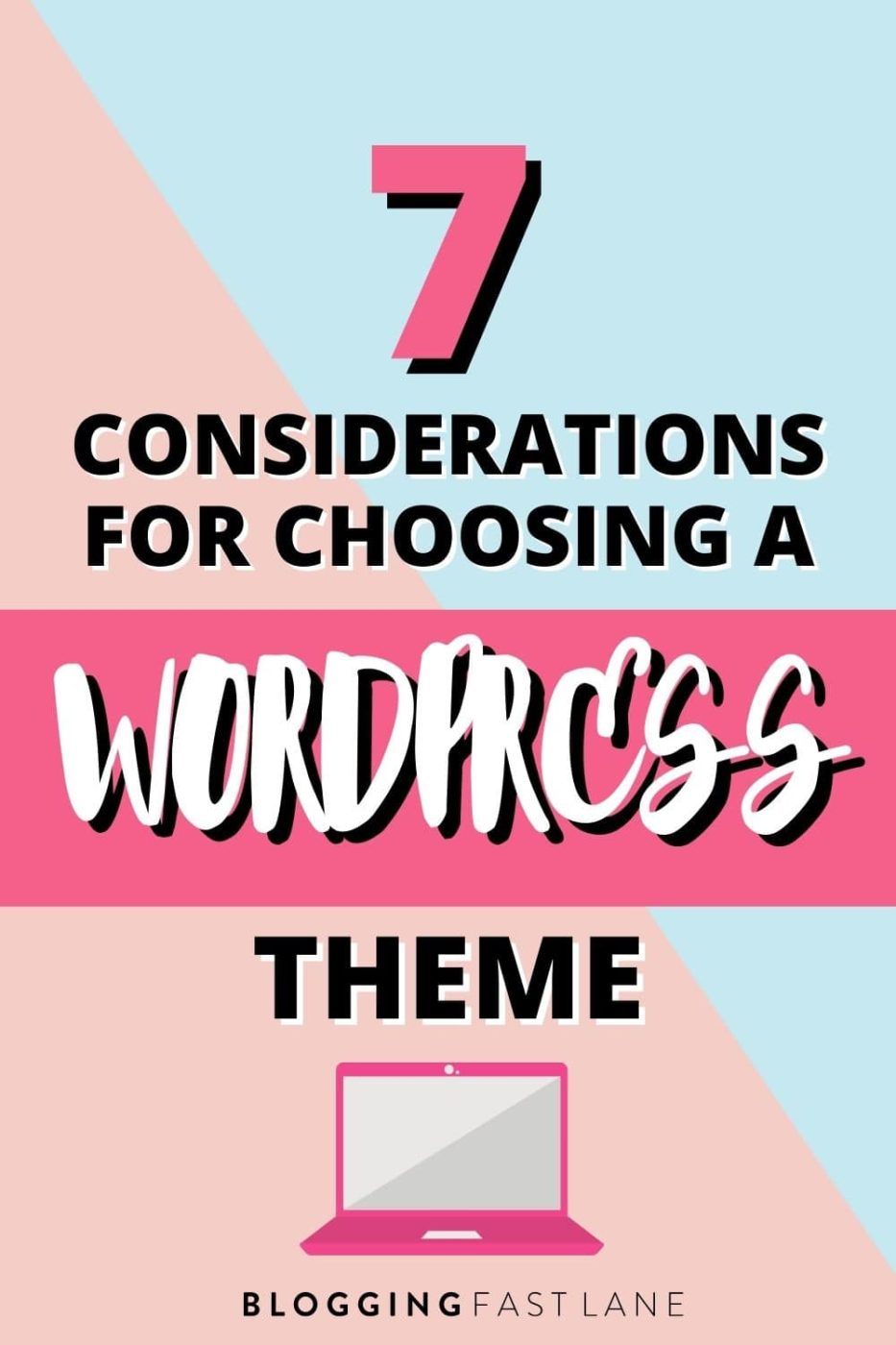This article may contain affiliate / compensated links. For full information, please see our disclaimer here.
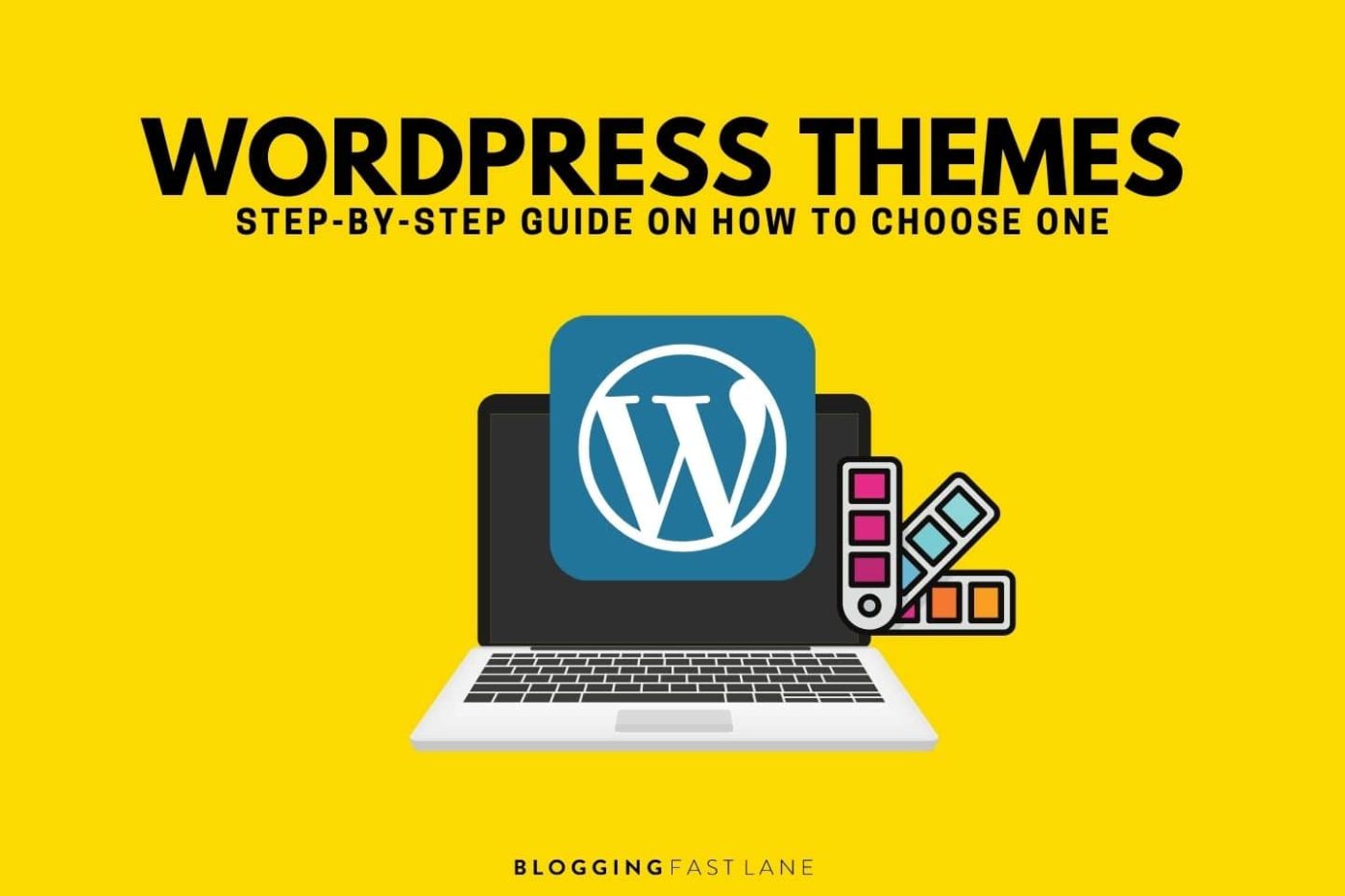
With thousands and thousands of themes out there, you must be curious about how to choose a WordPress theme that will make your blog stand out.
In this article, I detail everything you need to know about choosing between a free and premium theme, as well as 7 prime considerations to keep in mind before settling on a theme.
Before diving in, keep in mind that WordPress themes are pre-built website templates that allow anyone to create an amazingly designed website. Instead of having to code the entire thing yourself, themes were created by developers to simplify the website creation process and make it accessible to anyone.
When it comes to picking a WordPress theme for your blog, follow the advice in this article and you’ll have an amazing base to work off when it comes to building out your website.
Free vs Premium WordPress Themes: Which Should You Choose?
When it comes to WordPress themes, there is an overwhelming number of options. Hundreds of results appear in any search, making it challenging to figure out what the best option is for your blog.
To make things a little simpler, we can break themes down into 2 categories: free and premium.

Free WordPress Themes
- Free to use
- Traditionally minimalist designs
- Limited customization & features
- Commonly used (can’t stand out with them)
One of the huge perks of WordPress is that users have access to a theme library packed with thousands of free themes. This means that bloggers can generally find a template to satisfy the basic needs of a website without having to know how to code themselves.
The biggest upside to free themes is that they don’t cost anything, allowing bloggers with a tight budget to build their websites without a price tag.
However, lack of cost typically means these themes are website barebones so you can build your blog, just without any frills. Free themes can also be trickier to work with and super limited in the customization department.
Instead of making your theme fit your needs, you have to fit your needs to the theme.
This is why we don’t recommend going with a free theme. For an extra $60 or so, you’ll save yourself so much time and effort on the customization front.
Beyond just limits surrounding customization, you’ll also find that free themes have really limited features as well. They don’t come with extra bells and whistles that are useful when it comes to building a blog like page builders and sliders.
Rather, it’s as simple and standardized as it gets. Plus, if you run into any trouble, you’re pretty much on your own with a free theme as they don’t provide support.
Finally, free themes are also filled to the brim with users. Seriously, some of them have more than 1 million downloads, which greatly decreases your blog’s chances of standing out online. If one million people are using the same theme as you with limited customization, it’s likely that your blog will end up looking very, very similar to other blogs online.
Premium WordPress Themes
- Cost between $5 to $100
- Advanced functionality & customization controls
- Often come with add-ons like page builders and plugins
- Easier to work with & make your own
On the other hand, we have premium WordPress themes which can cost anywhere from $5 to $100. Commonly, they average out to cost around $60. These themes come with advanced functionality, custom controls, and oftentimes lots of added benefits like WordPress plugins and page builders.
One of the top reasons it’s worth paying for a premium theme is they come with demos (website templates) that can be imported directly onto your blog. From there, you just need to fill in your information and upload some pictures and your website is in working order.
Premium themes also tend to be easier to work with and allow users a full range of controls when choosing colors, fonts, and page designs. They also have many more options for incorporating elements like social media feeds, side bars, menus, and more.
The only downside of premium themes is that some of them are so packed with features that they can cause a website to have a slow load time. To avoid this, keep an eye out for themes labeled as “lightweight”.
Between free themes and premium ones, if you can afford it, I’d definitely recommend purchasing a theme that can grow with you rather than settling for one that you’ll eventually outgrow.
Just think of what a pain it’ll be to switch everything over from a free theme in a few months when you realize you want more customization control with the look and feel of your blog.
We’ve found that premium themes are worth every penny as they allow you to make a professional-looking website with ease that you can use for years to come.

7 Things to Consider When Choosing a WordPress Theme
If you’re on the hunt for a WordPress theme, here are some fundamentals for consideration.
Features & Functionality
Right off the bat, you want to determine what kind of features you want on your blog. Then when you’re looking for a theme, you’ll know exactly what to watch out for as you sort through the different options.
Some key features you may want to consider are:
- Header / Footer customizer
- Sidebar option
- Featured posts
- Email opt-in form space
- Search bar
- Menu (with Mega Menu option)
- Social media buttons
As I mentioned, premium themes offer users much more advanced functionality and options than free themes, allowing you to customize each element to your heart’s content.
Premium theme demos also tend to come with all of the key features listed above, along with ones that are unique to each theme.
Theme Layout & Design
You should also consider the theme’s layout and design. You might be asking yourself, “does blog design really matter?” If you want to make an impact on your readers, it sure does.
Picking a theme that has a nice layout and design can save you a lot of work when it comes to building out your website. With plenty of demos to choose from, it’s generally pretty easy to find sleek-looking templates that will do the trick.
But what if you already have a picture in your mind of what you want your blog to look like? When you search for a theme, you’ll need to make sure that the one you pick can achieve your desired look.
Pro Tip: The theme Divi comes with more than 140 layouts to help bloggers find the perfect fit for each page of their site.
When looking at different blog designs, it also helps to narrow down your choices by niche. There are tons of themes created around different topics like travel, food, lifestyle, fitness, etc, making it quite straightforward to find a good match for your needs.
Besides just matching your needs, when you pick a theme, you also need to make sure that it’s appealing to your target audience. For example, some niches like design or travel may want image-heavy layouts, so you need to make sure that you find a theme that can accommodate those elements.
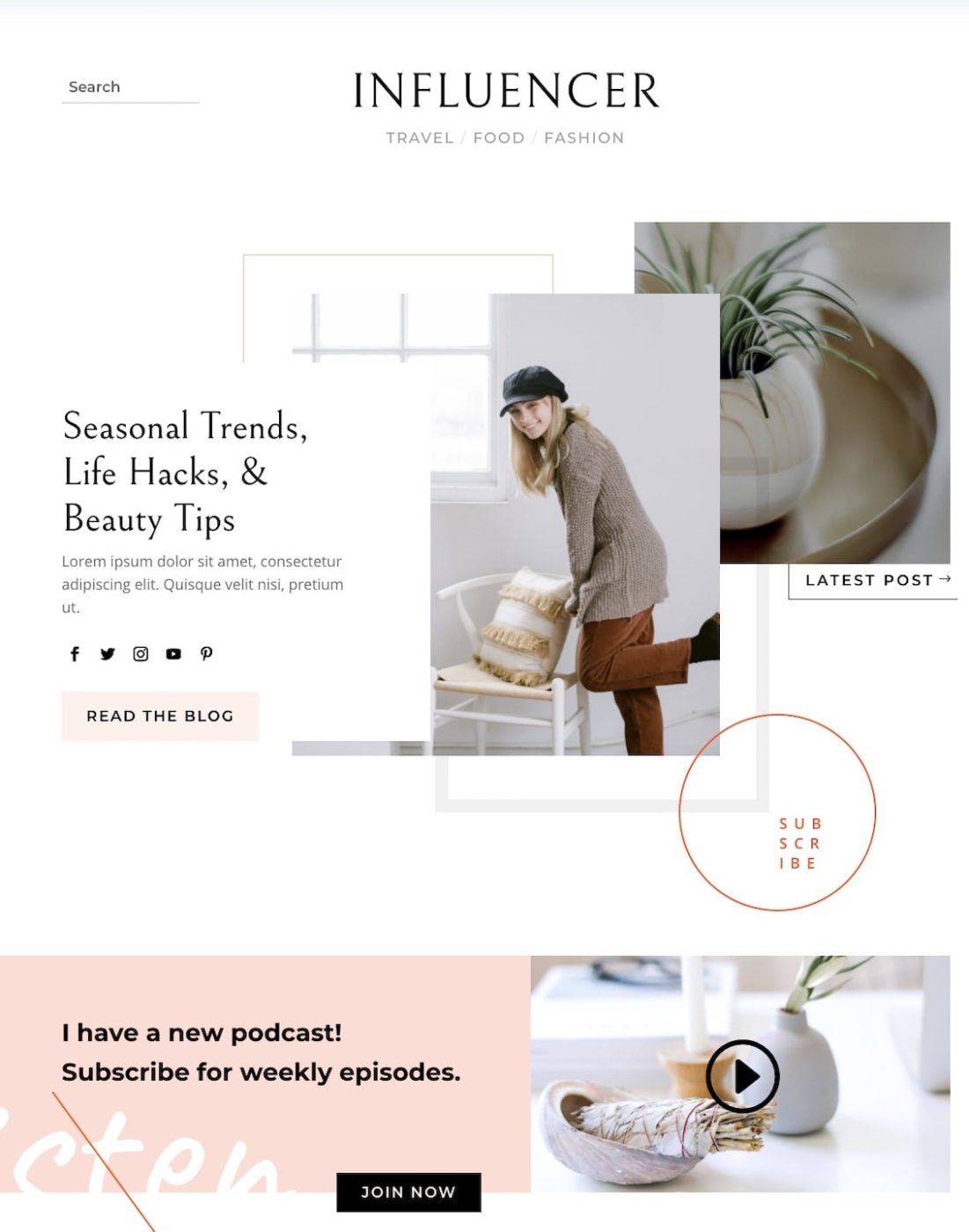
Page Builders
If you want the most user-friendly experience when it comes to building your website, consider choosing a theme that comes with a page builder.
Page builders are extensions that are often included with premium themes that allow users to bypass the WordPress editor’s clunkiness. Page builders typically work on a drag-and-drop system which simplifies the design process tenfold.
The most popular page builder that comes with premium themes is Elementor, which can also be purchased separately if you’re in love with a theme that doesn’t have it.
If you want some truly advanced functionality when it comes to designing your blog, the Divi page builder cannot be beaten. The design possibilities are absolutely limitless and it allows bloggers to bring their ideas to life in a way that’s easier than you could imagine.
Take a look at what Divi can do:
When choosing a WordPress theme, if it doesn’t come with a page builder, it’s worth checking to see if it’s compatible with them in case you want to download and use one.
Responsiveness
These days, most people actually read blogs on their smartphones, making it more important than ever to choose a responsive design when you pick a WordPress theme.
Many themes are already optimized for mobile users but you’ll come across the odd one that’s for desktops only. Definitely avoid those kinds of themes as they’ll make it a struggle for readers to consume your content from anywhere but their computers.
It also pays to find a theme that is responsive on tablets, in addition to smartphones, to really make the viewing experience seamless on any device.
Support for Plugins
One of the greatest joys of using WordPress are all the plugins available to add some fun to your blog.
Plugins are little bits of pre-built code that you can install on your blog to extend its functionality. WordPress has a gigantic selection of plugins that can do anything from integrating your social media feeds onto your blog to providing an extra layer of security and blocking spam.
Seriously, if you want to do something with your blog that your theme can’t, you can probably find a plugin for it.
That being said, you need to make sure that your theme supports WordPress plugins, or at the very minimum, the most popular ones.
Note: Plugins are great, but if you have too many, they’ll slow down the load time of your website! So use them where needed, but sparingly.
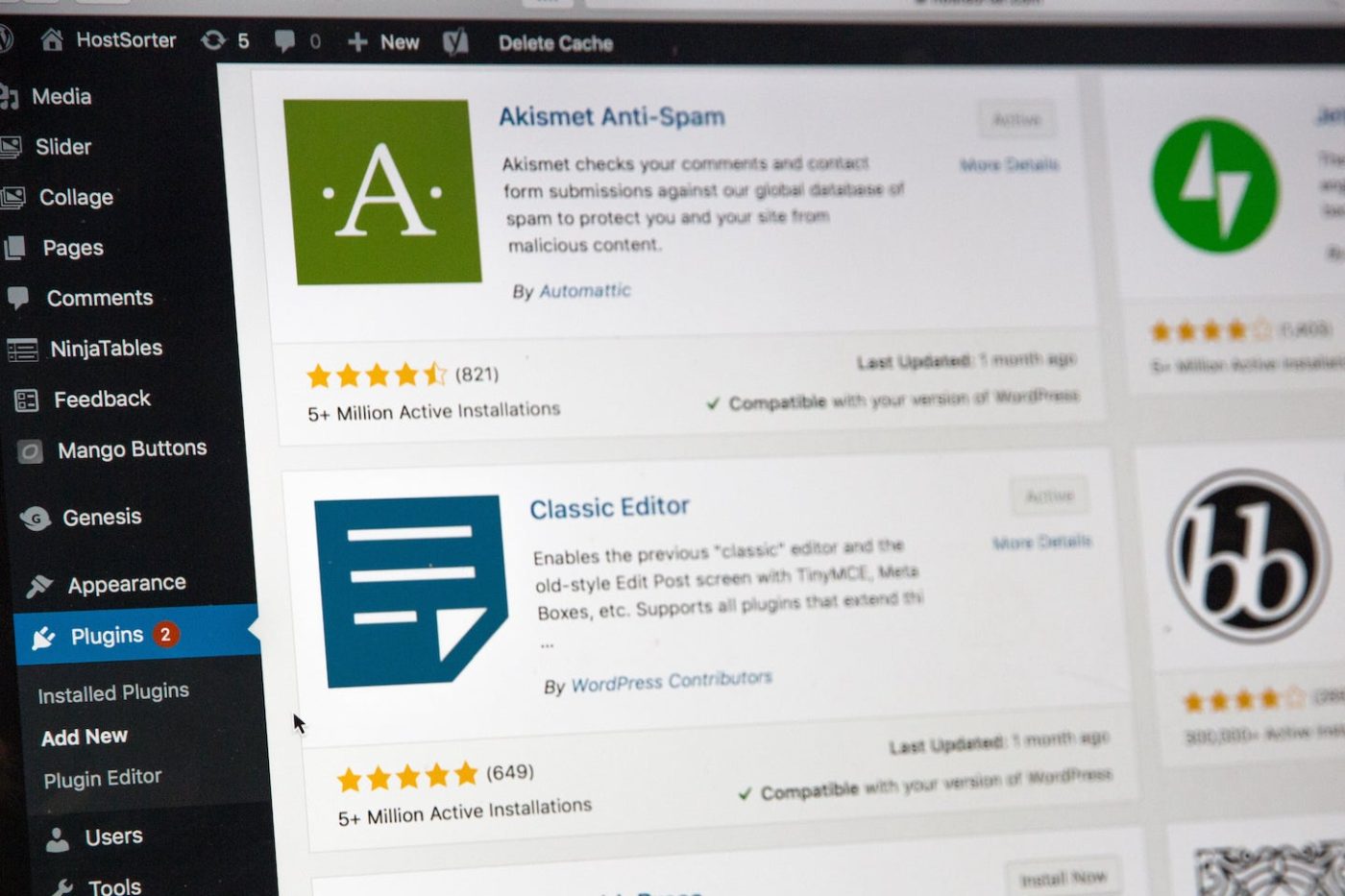
Support When You Need Help
If you’re going to pay for a premium theme, it’s worth it to make sure that it comes with support in case you run into any trouble along the way.
Besides just one-on-one support, any theme should come with proper documentation so that you can get it set up on WordPress without any trouble.
Top Tip: Look for themes that have YouTube tutorials online already. These will help you immensely when it comes to setting your blog up. While most premium themes come with documentation on how to get the theme installed, having step-by-step videos to follow is beyond useful when it comes to customizing your blog and adding in more advanced features.
Aside from checking for support, be sure to choose a theme that is updated regularly to stay ahead of the curve and avoid any bugs.
Ratings & Reviews
Lastly, regardless of whether you go the free or premium WordPress theme route, be sure to read the reviews and ratings to see how other bloggers and website owners have found the theme.
Sometimes you may think you’ve found a theme that looks exactly the way you want it to, only to find out that it’s impossible to work with after making a purchase.
Make sure you explore any cons of a theme (not just the way the demo looks) and pay close attention to how others feel about it. This can save you from choosing themes that will ultimately end up as a flop.
If you’re not sure where to start on how to pick a WordPress theme, you’ll find plenty of guides online that have collections of the best WordPress themes across different niches. Even if a theme doesn’t have reviews, if you find a round-up from a credible source, you can probably trust the ones you find on these lists.
Which leads me to…
Our WordPress Theme Recommendations
We’ve built several blogs in our time and help our students build out their own blogs every single day. Since this is the case, we’ve explored tons of different WordPress themes that cover a whole assortment of topics.
From this experience, we’ve been able to put together our personal recommendations for WordPress themes across different niches.
Check out these articles to find something to suit your blog today:
- Travel Blog WordPress Themes
- Lifestyle Blog WordPress Themes
- Food Blog WordPress Themes
- Elementor Compatible WordPress Themes
- Free WordPress Themes
If you’re in a hurry, we do have some themes up our sleeves that work well, no matter what kind of blog you’re building.
Divi is our top pick for a premium WordPress theme for all the reasons I’ve mentioned throughout this article, PLUS with unlimited design control and functionality.
There are 40+ website elements and modules to build from, 100+ full website packs, and 800+ premade designs. While it’s slightly more expensive than most premium themes, with all that it offers, most bloggers find that Divi is well worth the cost.
For a simpler theme that still packs a punch, I can also recommend Astra which was designed to be speedy and versatile. Astra is actually the most lightweight theme on the market and was created to work in conjunction with page builders.
The free version of Astra is great for beginners but for access to multiple modern demos and extensive customization control, it’s worth an upgrade to Astra Pro.
If you have a little more time to browse theme options, check out Themeforest, which has thousands of WordPress themes available for download.

One Last Word on Choosing Themes
If you’re a beginner blogger picking out a theme for the first time, it’s unbearably tempting to spend forever customizing it so your blog looks just right. Even intermediate and advanced bloggers can get swept away with web design.
Let me just tell you that this is not the best use of your time! Don’t get caught up trying to make things look perfect. There’s no such thing as a perfect theme and an absolutely perfect-looking blog is pretty unattainable on your first try.
Instead of dwelling on this, get your blog to a place where it works for you so that you can focus on actually building out the essential components of your blog… like the content!
Then further down the road, you can go back in and “upgrade” your theme’s design when you’ve gotten the more important pieces of your blog in place.
When it comes to picking a WordPress theme for a blog, the 7 considerations laid out in this article should help to narrow down the options into a more manageable pool of results. Then, you can explore different theme options, check out their demos, and decide on what will create the best look and feel for your blog.
Like this Article? Pin it!
